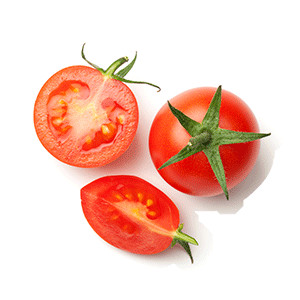Betalux

Variety
Betalux
Approved Data
created by steffen a. at 29.05.2023
Features
Resistenzen
pink
Color
rot
Geschmack
aromatisch
süßlich
feinsäuerlich
Location
Gewächshaus
Balkon
Beet
Kübel
Freiland
hängend
Growth habit
kompakt
halbhoch
buschig
Fruit shape
blue
Season Overview
Propagating
Planting
Harvest
J
F
M
A
M
J
J
A
S
O
N
D
Description
This very early, high-yielding outdoor variety grows bushy with limited growth and is parthenocarpic, i.e. it does not need pollinators to set fruit. It is a stiff-stemmed dwarf plant - it does not grow very tall, but compact. It also has good resistance to the most serious diseases and, at just 1.20 m tall, is ideal for containers and tubs on balconies. Its medium-sized (70-80g), round, partly flattened dark red fruits have a typical tomato-aromatic taste. Their skin is firm and smooth, the flesh is firm and fleshy with few seeds. Betalux tomatoes are harvested after around 65 days. This is why they are resistant to blight, but susceptible to Alternaria mold and magnesium deficiency.
Non hybrid
Not frost resistant
Growing tips
Tomatoes require a lot of light, warmth and nutrients. They are grown from seed on the windowsill from March. The seedlings should be planted deep, up to the first leaf base, so that the root system is enlarged by additional lateral roots. Unlike most other crops, tomatoes should always be planted in the same place. The plants also need wooden/corrugated wire rods or a trellis to which you tie them regularly. This is the only way they can support the weight of the fruit. You should regularly break out the side shoots that form in the leaf axils. This is because they do not bear fruit and take away the plant's energy to concentrate on producing lots of fruit. Under-sowing with low-growing plants is a good option - watering tomatoes: Depending on whether you pre-sow or direct sow tomatoes, and depending on the location and variety, you will need to water your tomato plants differently often. Tomatoes can develop very deep roots that can even draw water from the groundwater. In this case, you hardly need to water them, if at all. Pay attention to the leaves, if they hang limp you should water your tomato plants. The soil dries out more quickly, especially in pots, raised beds and raised beds, so you will need to water them more often.
Details
Light requirement
Sunny
Water requirement
Moist
Soil
Light (sandy)
Nutrient requirement
High
Plant distance
40 cm
Row spacing
45 cm
Seeding depth
0.5 cm
Companion Plants
Asparagus
Basil
Bean (Dwarf bean)
Bean (Runner bean)
Broccoli
Brussels sprouts
Cabbage (Cabbage)
Cabbage (Savoy cabbage)
Carrots
Cauliflower
Celery (Celeriac / Celery root)
Celery (Celery)
Chili
Chives
Collard greens (Kale)
Collard greens (Tuscan kale / Dinosaur kale / Palm tree kale)
Common marigold
Cress
Garlic
Gooseberry
Kohlrabi / German turnip / Turnip cabbage
Leeks
Lettuce (Lettuce)
Lettuce (Radicchio / Italian chicory)
Mint
Mizuna / Japanese mustard greens
Napa cabbage / Chinese cabbage
Nasturtium
Onion
Onion (Spring onion)
Oregano
Pak Choi
Parsley
Pepper / Paprika
Radish
Radishes
Root parsley
Soybean
Spinach (Summer)
Antagonistic Plants
Diseases
Brown rot
Pests
No pests